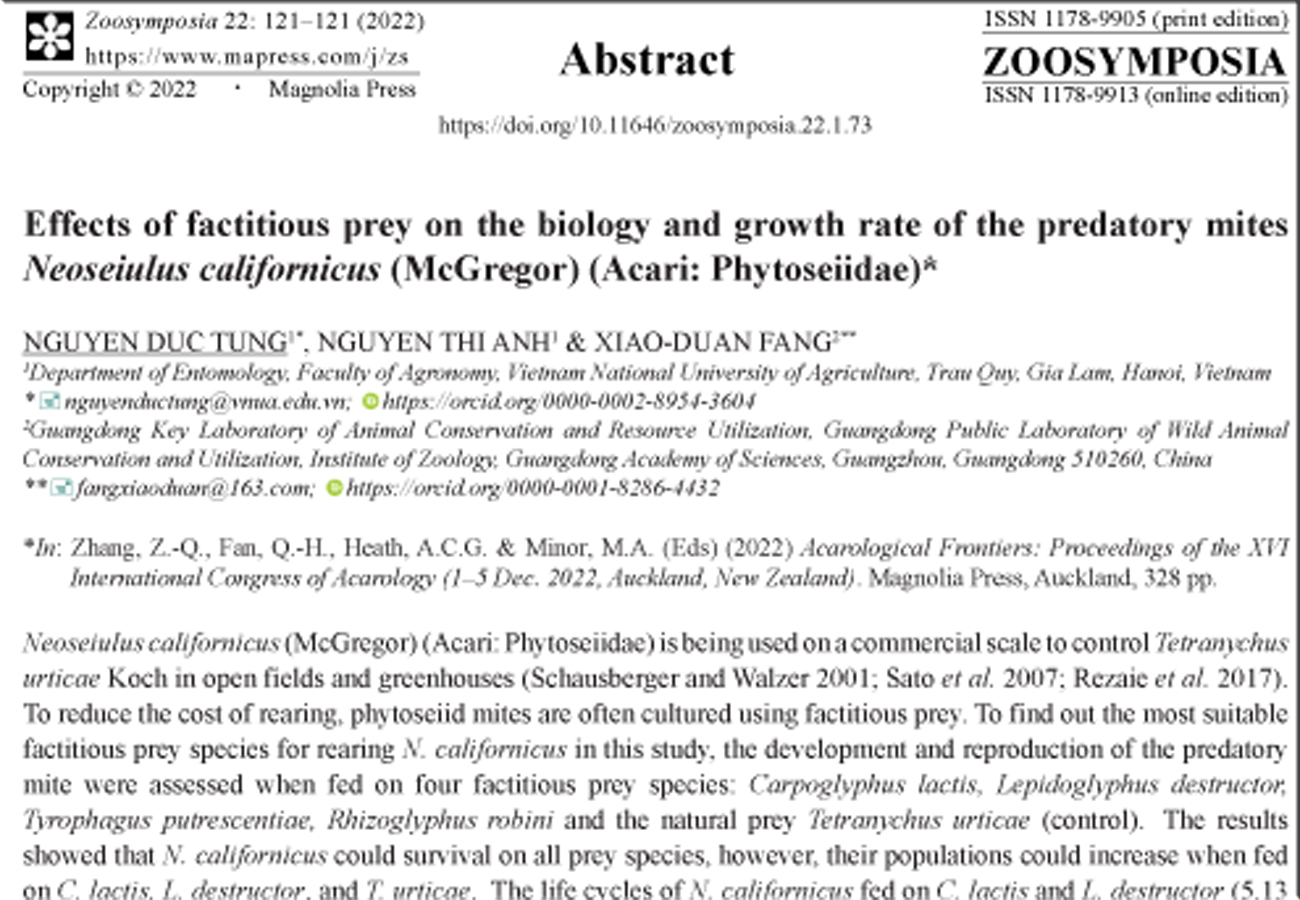Abstract
Neoseiulus californicus (McGregor) (Acari: Phytoseiidae) is being used on a commercial scale to control Tetranychus urticae Koch in open fields and greenhouses (Schausberger and Walzer 2001; Sato et al. 2007; Rezaie et al. 2017). To reduce the cost of rearing, phytoseiid mites are often cultured using factitious prey. To find out the most suitable factitious prey species for rearing N. californicus in this study, the development and reproduction of the predatory mite were assessed when fed on four factitious prey species: Carpoglyphus lactis, Lepidoglyphus destructor, Tyrophagus putrescentiae, Rhizoglyphus robini and the natural prey Tetranychus urticae (control). The results showed that N. californicus could survival on all prey species, however, their populations could increase when fed on C. lactis, L. destructor, and T. urticae. The life cycles of N. californicus fed on C. lactis and L. destructor (5.13 and 5.17 days respectively) were significantly shorter than those fed on T. urticae (5.89 days). The total number of eggs per female N. californicus fed on L. destructor was the highest (51.48 eggs/female), intermediate on T. urticae (45.11 eggs/female) and the lowest on C. lactis (38.68 eggs/female). When fed on L. destructor and T. urticae, the sex ratios (% female) in the 2nd generation of N. californicus reached approx. 70%—significantly higher than those predators fed on C. lactis (58.65%). The intrinsic rate of increase of N. californicus fed on L. destructor (0.338) was significantly higher than those females fed on C. lactis (0.304) and T. urticae (0.314). In conclusion, the factitious prey L. destructor is the best food source for mass rearing the predatory mite N. californicus.
References
Rezaie, R., Saboori, A., Baniameri, V. & Hosseini Gharalari, A. (2017) The effect of strawberry cultivars on functional response and prey-stage preference of Neoseiulus californicus (Acari: Phytoseiidae) on Tetranychus urticae (Acari: Tetranychidae). Journal of Entomology and Zoology Studies, 5(1), 27–35.
Sato, M.E., Silva, M.Z., Cangani, K.G. & Raga, A. (2007) Seleҫões para resistência e suscetibilidade, detecҫão e monitoramento da resistência de Tetranychus urticae Koch (Acari: Tetranychidae) ao acaricida clorfenapir. Bragantia, 66, 89–95.
Schausberger, P. & Walzer, A. (2001) Combined versus single species release of predaceous mites: predator-predator interactions and pest suppression. Biological Control, 20, 269–278. https://doi.org/10.1006/bcon.2000.0908


